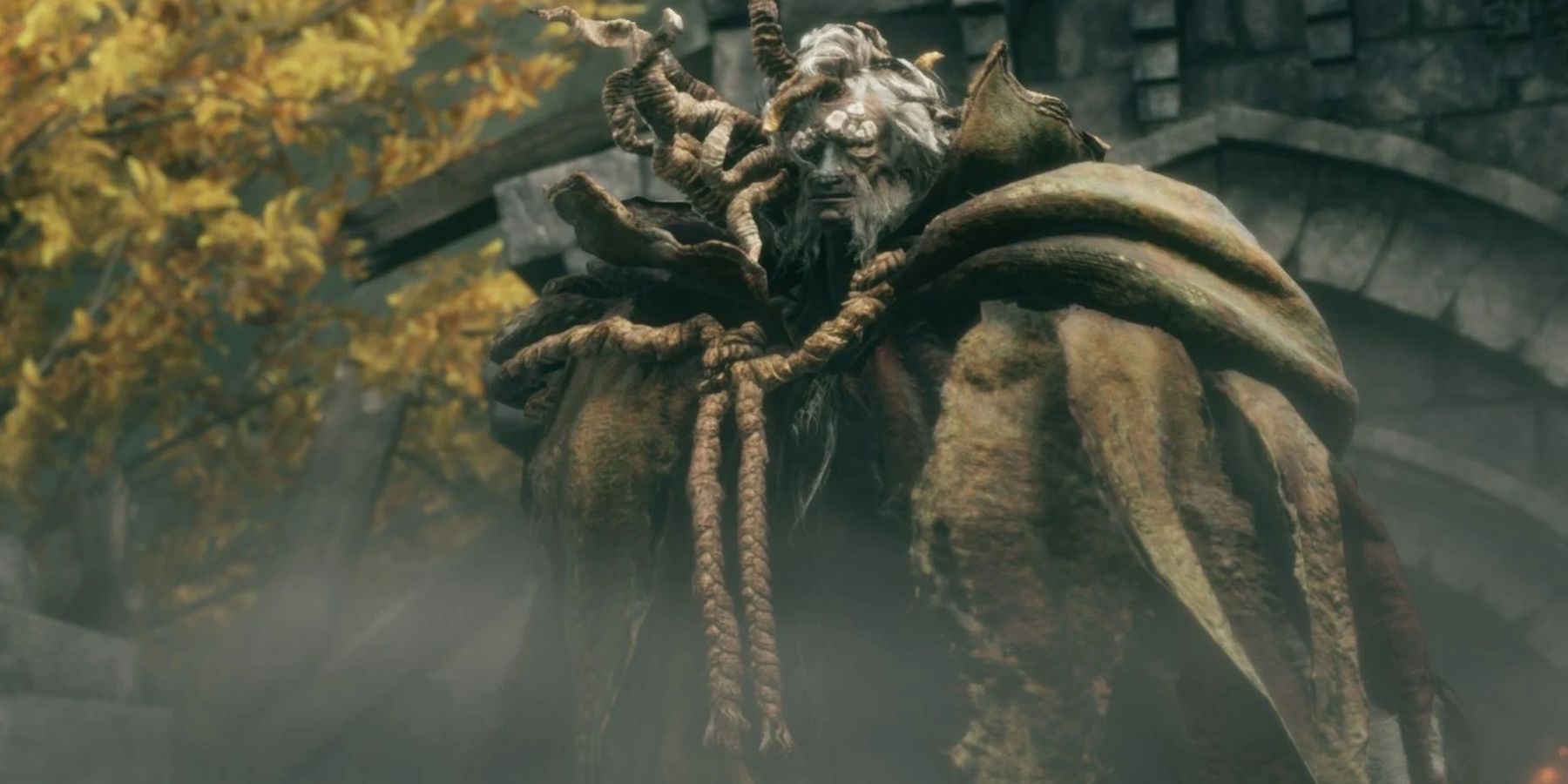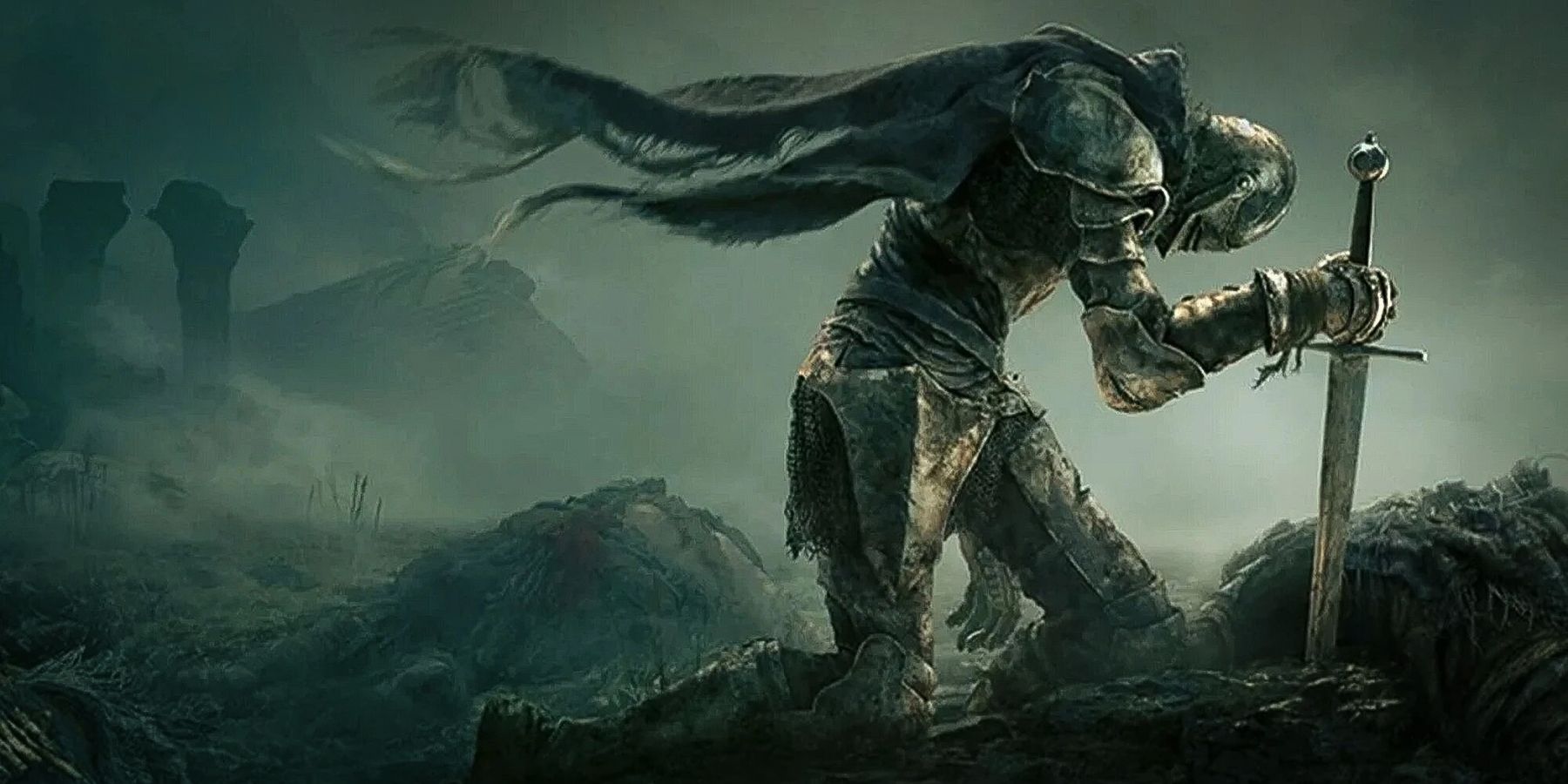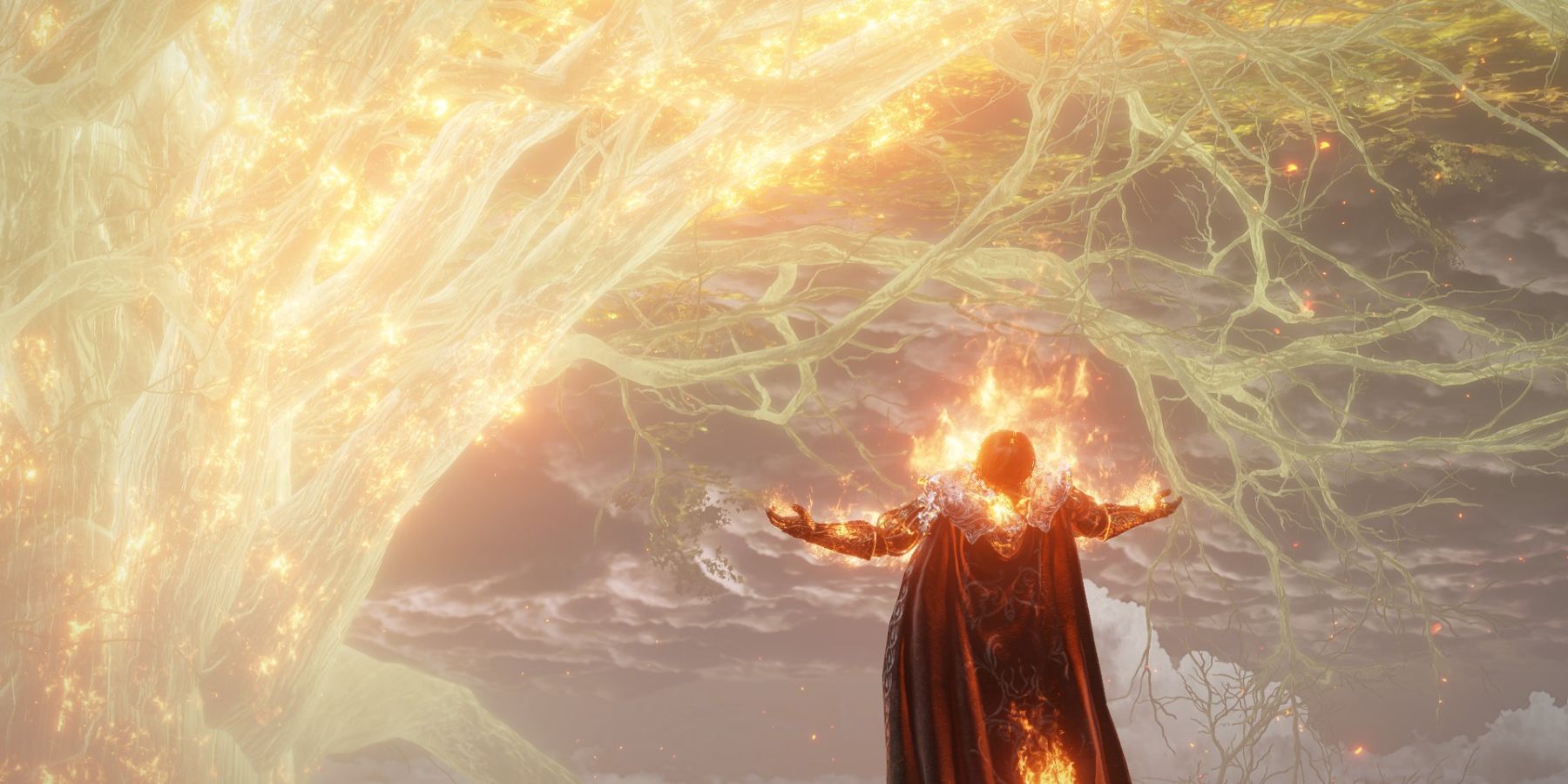Elden Ring players will face numerous bosses throughout the game, some of them more than once. Most of the time these are “lesser” bosses in Elden Ring, but there is one major boss that players will face twice under different names. Many Elden Ring players may struggle with Margit, the Fell Omen the first time they face him, but they will also face him again in Leyndell capital as Morgott the Omen King.
These two similarly-named beings are intentionally so, as Morgott uses Margit as a false name to hunt Tarnished without giving out his true identity. He’s not the first character to use multiple names in Elden Ring, but he is perhaps among the most explainable. Morgott seeks to end any Tarnished looking to become Elden Lord before they become too powerful, with his place in the Capital as the last line of defense of sorts. That, and his rightful place as self-proclaimed Last of All Kings, as his demi-god siblings are all “traitors.”
As both Margit and Morgott, he’ll beat on a simple concept that may sound more important than it is: “the Flame of Ambition.” That’s not to say it’s not thematically important, as it very much is, but it’s not some mechanic or plot device Elden Ring players should get caught up on.
Elden Ring’s Tarnished and the Flame of Ambition
In the simplest terms, it’s a figure of speech. Morgott is wanting to stop the Tarnished’s ambition of becoming Elden Lord, which is the exact same ambition players have for beating the game. It’s not exactly fourth-wall breaking, but Morgott relishes in the fact that he can beat players back. When players first face him as Margit, he’ll say that they are emboldened by the flame of ambition and that Margit the Fell will extinguish it.
Given how Margit serves as the first major boss that players may struggle with, it’s a fitting connection to players. Before they face him as Morgott, they’ll come across him again when an enemy takes his Omen form outside Leyndell—“I see thee, little Tarnished, smoldering with thy wretched flame of ambition.” At this point, players are traveling to the base of the Erdtree, and it’s an exciting, ambitious point for players.
When players face Morgott the Omen King, he’ll call his siblings traitors and pillages for their actions following the Shattering, which the player themselves is essentially reenacting, and says they were emboldened by the flame of ambition too. In other words, the players are following the same path they did—yet unlike them, players can become Elden Lord. So, ultimately, the fire Morgott references is the player’s ambition to beat the game, despite its challenges.
Fire’s Role in FromSoft Games
It’s a simple, but effective, figure of speech, but because this is a FromSoft game, it goes a little deeper. Fire is always important in some form or another, with it playing a major role in all FromSoft games. Fire Magic is considered witchcraft and primal in Demon’s Souls, the Dark Souls franchise deals with linking the flame and more, beasts fear fire in Bloodborne, and Ashina ends in a sea of flame come Sekiro: Shadows Die Twice.
The destruction of the Erdtree is perhaps the biggest step in fulfilling the player’s flame of ambition, but combined the symbolic figure of speech, the Fire Giant and its background, and of course, the Lord of Frenzied Flame ending in Elden Ring, it’s clear how just important this concept/figure of speech is in the game.
Elden Ring is available now for PC, PS4, PS5, Xbox One, and Xbox Series X.



